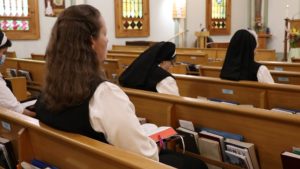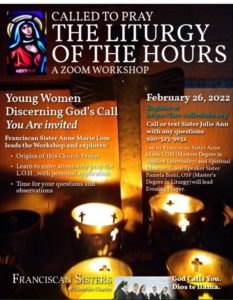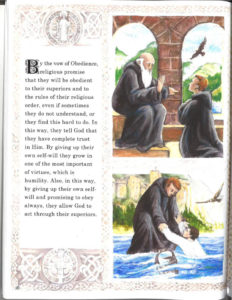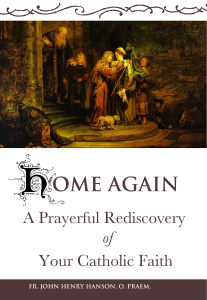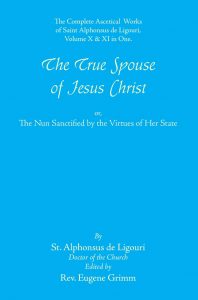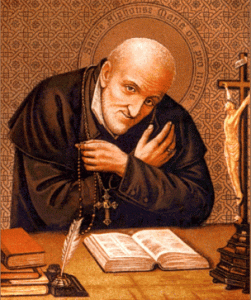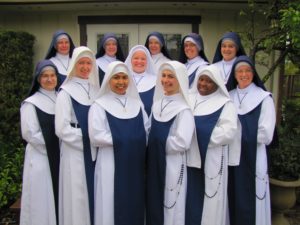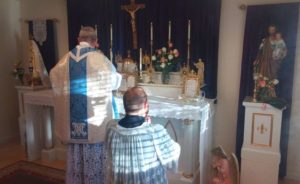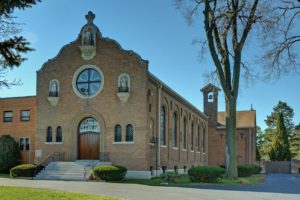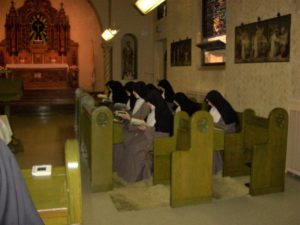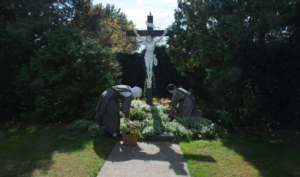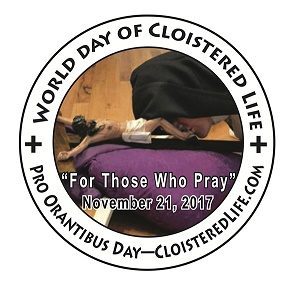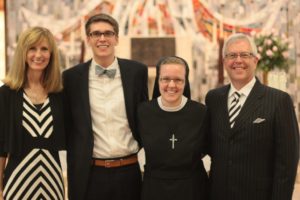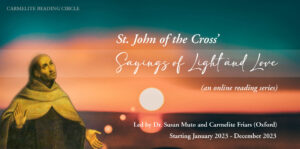 Want to be guided throughout 2023 by the great master of the spiritual life, St. John of the Cross? Now you can do this with a never-before offered online reflection series led by Dr. Susan Muto and the Centre for Applied Carmelite Spirituality in the U.K. “This is a once-in-a-lifetime opportunity to engage with the spirituality of the 16th century mystic and writer under the direction of a world-renowned scholar,” said Fr. Alexander Ezechukwu, OCD, prior of the Oxford Carmelite Friars. “Participants will not only study St. John’s writings, but meet online on video once a month and interact with Dr. Muto,” Fr. Alexander said. The course is “The Sayings of Light and Love,” which is also the title of Dr. Muto’s forthcoming book on the spirituality of St. John of the Cross.
Want to be guided throughout 2023 by the great master of the spiritual life, St. John of the Cross? Now you can do this with a never-before offered online reflection series led by Dr. Susan Muto and the Centre for Applied Carmelite Spirituality in the U.K. “This is a once-in-a-lifetime opportunity to engage with the spirituality of the 16th century mystic and writer under the direction of a world-renowned scholar,” said Fr. Alexander Ezechukwu, OCD, prior of the Oxford Carmelite Friars. “Participants will not only study St. John’s writings, but meet online on video once a month and interact with Dr. Muto,” Fr. Alexander said. The course is “The Sayings of Light and Love,” which is also the title of Dr. Muto’s forthcoming book on the spirituality of St. John of the Cross. 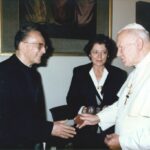 “This is a perfect way to deepen one’s prayer life, draw closer to God and neighbor, and to sit at the feet of a great leader in Christian spirituality, Dr. Muto,” Fr. Alexander said. Dr. Muto is a leader in spirituality literature as well as executive director of the Epiphany Association, and dean of the Epiphany Academy of Formative Spirituality in Pittsburgh, PA. She is the author or co-author of more than sixty books on Catholic spirituality. The Centre for Applied Carmelite Spirituality (CACS) is the world’s foremost authority on applied Carmelite spirituality. It is a place of research and training that promotes the renewal and growth of the spiritual life, drawing on the rich resources of the venerable Carmelite tradition. The Centre strives to achieve this through retreats and structured study and training programs on spirituality from the Carmelite perspective. Its flagship program, the Spiritual Direction Formation Programme, is unique and has participants from all over the world. The Centre’s goal, whether through its in-person or online services, is to bring people to experience a life-transforming friendship with God through a lived experience of Carmelite spirituality that is authentic to its biblical roots. The CACS is located at the Carmelite Priory in Oxford, UK.
“This is a perfect way to deepen one’s prayer life, draw closer to God and neighbor, and to sit at the feet of a great leader in Christian spirituality, Dr. Muto,” Fr. Alexander said. Dr. Muto is a leader in spirituality literature as well as executive director of the Epiphany Association, and dean of the Epiphany Academy of Formative Spirituality in Pittsburgh, PA. She is the author or co-author of more than sixty books on Catholic spirituality. The Centre for Applied Carmelite Spirituality (CACS) is the world’s foremost authority on applied Carmelite spirituality. It is a place of research and training that promotes the renewal and growth of the spiritual life, drawing on the rich resources of the venerable Carmelite tradition. The Centre strives to achieve this through retreats and structured study and training programs on spirituality from the Carmelite perspective. Its flagship program, the Spiritual Direction Formation Programme, is unique and has participants from all over the world. The Centre’s goal, whether through its in-person or online services, is to bring people to experience a life-transforming friendship with God through a lived experience of Carmelite spirituality that is authentic to its biblical roots. The CACS is located at the Carmelite Priory in Oxford, UK. 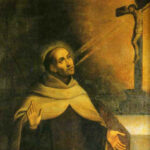 The new course, “The Sayings of Light and Love,” consists of an online video meeting on the last Tuesday of each of 12 months. It will begin on Jan. 31 and will be led by Dr. Muto and a Carmelite friar. Participants will be sent 15 sayings of St. John of the Cross each month along with discussion questions.Participants are encouraged to meditate on the sayings and even record their reflections about them in a journal in preparation for each meeting. The Centre’s online programs have been very well received. A recent Advent online retreat attracted nearly 400 members. Its publishing house, which offers print, audio and video productions, is Teresian Press Publications.
The new course, “The Sayings of Light and Love,” consists of an online video meeting on the last Tuesday of each of 12 months. It will begin on Jan. 31 and will be led by Dr. Muto and a Carmelite friar. Participants will be sent 15 sayings of St. John of the Cross each month along with discussion questions.Participants are encouraged to meditate on the sayings and even record their reflections about them in a journal in preparation for each meeting. The Centre’s online programs have been very well received. A recent Advent online retreat attracted nearly 400 members. Its publishing house, which offers print, audio and video productions, is Teresian Press Publications.  The core of Carmelite spirituality is a journey of the heart. One of the Oxford house friars has written that Carmelite spirituality is “like the exodus experience of God’s people and their meeting with the Lord in the wilderness.” St. John of the Cross, along with St. Teresa of Avila, founded the Discalced Carmelite Order in the 1500s. They cooperated in forming a spirituality that appeals to friars and other consecrated persons as well as the laity. The online reading series is for anyone wishing to deepen their spiritual life, and grow to love God and neighbor more. Sign up for the course, “The Sayings of Light and Love,” at https://www.carmelite.uk.net/online-talks-retreats/sayings-of-light-and-love-series/
The core of Carmelite spirituality is a journey of the heart. One of the Oxford house friars has written that Carmelite spirituality is “like the exodus experience of God’s people and their meeting with the Lord in the wilderness.” St. John of the Cross, along with St. Teresa of Avila, founded the Discalced Carmelite Order in the 1500s. They cooperated in forming a spirituality that appeals to friars and other consecrated persons as well as the laity. The online reading series is for anyone wishing to deepen their spiritual life, and grow to love God and neighbor more. Sign up for the course, “The Sayings of Light and Love,” at https://www.carmelite.uk.net/online-talks-retreats/sayings-of-light-and-love-series/
There is a charge for the program. Details can be found on the website.
The CACS is part of the Anglo-Irish province the Discalced Carmelites of the UK. Together with other provinces around the world, they belong to the worldwide Order of Discalced Carmelites, governed by the general curia.
